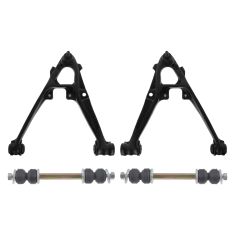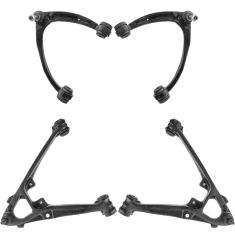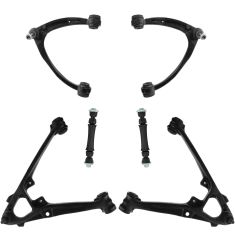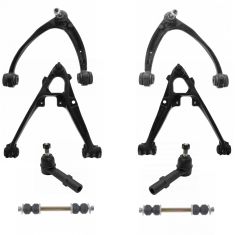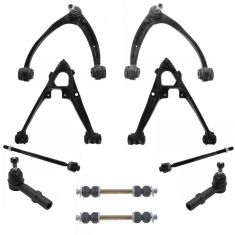1ASFK04510-Chevrolet GMC Cadillac Front Driver & Passenger Side Lower 2 Piece Control Arm with Ball Joint Set TRQ PSA62570
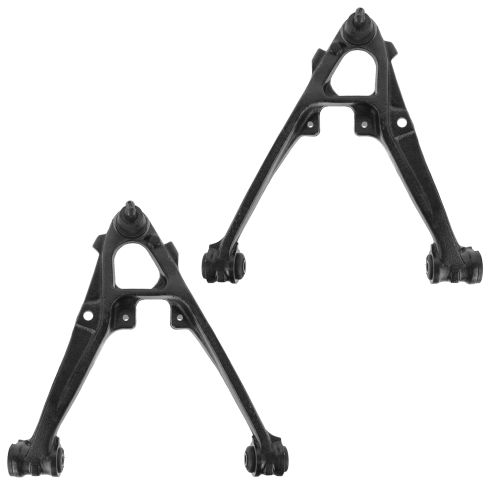
Replaces
2010 GMC Sierra 1500 XFE Front Driver & Passenger Side Lower 2 Piece Control Arm with Ball Joint Set TRQ PSA62570

Product Reviews
Loading reviews
4.50/ 5.0
14
14 reviews
Good price and fit.
August 27, 2017
Happy with this purchase good price and quality. They fit my new body style 2007 Silverado 4x4 perfectly. Had 178000 miles on the original ones . Hope these last the rest of the life of the truck. Best truck I ever owned.
Thanks
September 10, 2018
All parts fit my truck. The only issue I had was I thought the parts was OEM parts.
Good Product
November 19, 2018
Fits well, a little heavier than OE parts. Appear to have good corrosion protection.
Good Overall
December 6, 2018
Ordered to replace 2009 1500 4x4 Suburban. Control arm fits fine. Grease fitting takes a little work to get seated properly due to the location on arm [socket can't stay on all the way to tighten - shifted to needle nose pliers to finish, then just used a larger fitting from a kit I had.
Overall pleased - would recommend.
Awesome
February 18, 2019
Good parts easy fix. Would definitely recommend
fast service
November 24, 2020
Awesome place to order from , fast shipping and great prices..!!
Best order yet
March 5, 2021
Received the order in a timely manner. Parts went and fit just like they should. I will always use this place for my vehicles.
LCR
May 28, 2021
Arrived quickly, properly packaged, and ready to install. Correct part made for an easy install.
January 18, 2022
I needed that it was on point
Worked as described
October 14, 2022
Worked great and exactly what I needed. Hopefully they will hold up.
Don't waste your money
April 14, 2023
Poor quality. Ball joints burst within 1 week.
July 16, 2023
Good
perfect fit
[{"url": "https://wac.edgecastcdn.net/001A39/prod/media/pNISJll75W64CYGsite/307d9668ac1d1c521ad09c1edf6da7d8_1724613141242_0.jpeg", "caption": ""}]
August 25, 2024
Perfect fit. Good quality Fair price..
October 12, 2024
Awesome fit and part
Customer Q&A
Are there grease fittings on the ball joints?
October 10, 2019
10
These ball joints will come as being pregreased. Please let us know if you have any further questions.
October 10, 2019
Emma F
Does the balljoint have a c clip incase i want to remove it?
April 13, 2021
10
These ball joints cannot be removed.
April 13, 2021
Christa R
are the ball joints already pressed in?
December 11, 2022
10
Hello, Yes the ball joints are pressed in as indicated in the online images.
December 13, 2022
Ricale A
10
Yes. A-Arms are ready to install. Great fit.
December 23, 2022
Eugene B
10
Great fit
January 9, 2023
Brian K
Is mounting hardware included?
January 27, 2024
10
As I recall, It came with everything I needed without reusing old parts. I wish i would have bought a better torc wrench though. Lots of bolts
January 27, 2024
SHAD C
What material are these made of?
September 25, 2024
10
Depending on the year it can be cast steel, Aluminum or stamped steel.
September 25, 2024
TEXAS T
10
Cast iron
September 25, 2024
Jason Y
What material are they made of?
October 14, 2024
10
Cast iron
October 14, 2024
Jason V
GMC is a registered trademark of General Motors Company. 1A Auto is not affiliated with or sponsored by GMC or General Motors Company.
See all trademarks.








